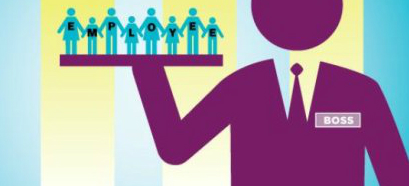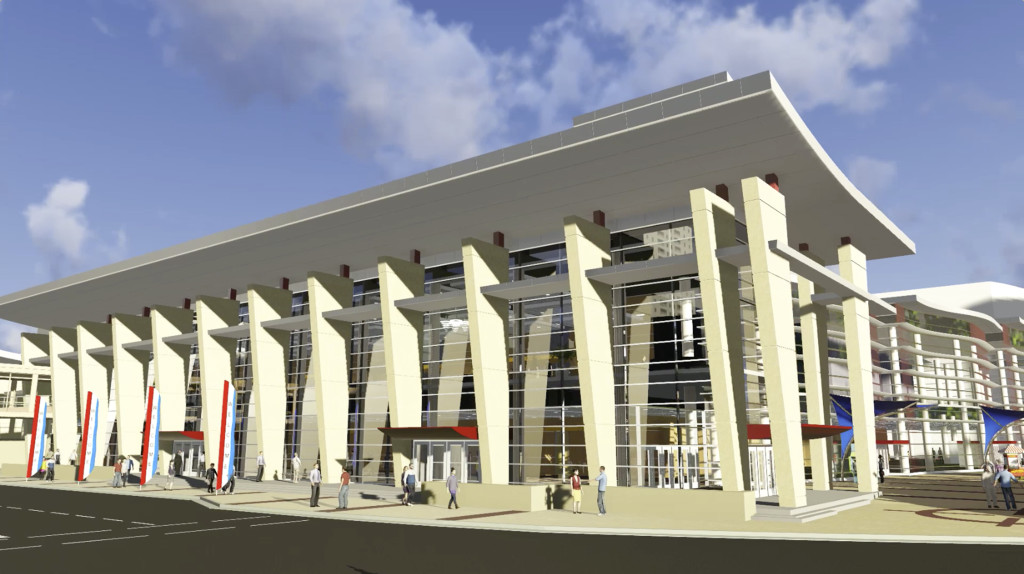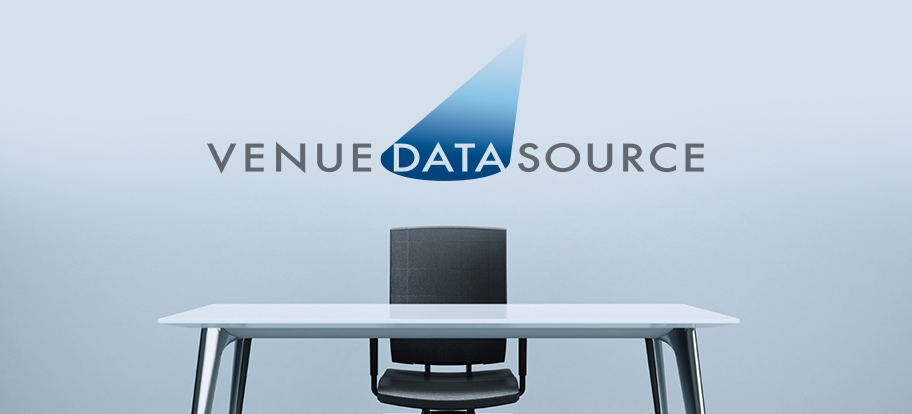Why Servant Leadership Matters
 A new study from the University of Illinois at Chicago shows that when bosses put their employees’ needs over their own needs, customer satisfaction and job performance by employees improves.
A new study from the University of Illinois at Chicago shows that when bosses put their employees’ needs over their own needs, customer satisfaction and job performance by employees improves.
“The best business leadership style is far from, ‘Do this. Don’t do that,'” said Sandy Wayne, one of the study’s researchers. “A servant leader looks and sounds a lot more like, ‘Is there anything I can do to help you?’ Or, ‘Let me help you….’ Or, ‘What do you need to…?’ This approach helps employees reach their full potential.”
Employees admire bosses who care about them and return that admiration with great teamwork, loyalty, and dedication to an organization.
“It’s contagious. The employees see their leaders as role models and often mimic those qualities, creating a culture of servant leadership,” Wayne said. “This serving culture drives the effectiveness of the business as a whole.”
The researchers conducted the study at the Jason Deli’s national restaurant chain and included 961 employees at 71 restaurants in 10 metropolitan areas. Wayne said that the restaurants with servant leaders experienced a 6 percent higher job performance, an 8 percent more customer service behaviors, and a 50 percent less likely to leave the company from employees.
(Image: UIC Business)
A $79 Million Expansion of the Mayo Civic Center is Under Way
I just had the following press release come across my desk featuring news from an IAVM member venue. Are you a member venue that has news to share? Please send it our way at editor@iavm.org, and we’ll publish it here on the blog or in our weekly newsletter (sometimes both places!).
Now, on to the news.
Work is under way on a $79 million expansion of the Mayo Civic Center in Rochester, Minnesota, set to debut in 2017. When complete, the expansion will nearly double the size of the center’s meeting and event facilities.
The expansion will bring the total amount of space at the Mayo Civic Center to more than 200,000 square feet—enough to host two 1,000-person events simultaneously. A new 40,000-square-foot Grand Ballroom will offer a seating capacity of more than 4,000 people, a ceiling height of 32 feet, and high-end finishes. A state-of-the-art kitchen and expanded food service facilities will also be included in the expanded Mayo Civic Center.
The center will feature a 25,000-square-foot exhibit hall, a 25,000-square-foot arena, a 12,000-square-foot auditorium, and 23 breakout rooms.
“The vision behind the expansion is focused on creating regional economic impact, broadening facility usability and services, and meeting the public assembly needs of a growing and thriving community,” said Donna Drews, executive director of the Mayo Civic Center. “Mayo Civic Center’s 188,000-square-foot convention center will broaden Rochester’s convention and meeting marketability, and free up existing facilities for concerts and entertainment—a key goal of the convention center expansion planners.”
San Francisco Bans Smokeless Tobacco at Sports Venues
Don’t even think twice about chewing tobacco at a sports venue in San Francisco. Starting Jan. 1, 2016, that pursuit will be against the law.
“Mayor Ed Lee on Friday signed into law an ordinance to prohibit the use of smokeless tobacco at athletic venues, specifically singling out baseball, which has a long history of players masticating and spitting tobacco juice in view of children who worship them,” the Associated Press reported.
The law is the first of its kind in the U.S. and includes electronic cigarettes and “moist inhalable snuff.” Violators will be asked to leave the playing fields.
“The home of the World Champion Giants has set an example that all of Major League Baseball and the rest of the country should quickly follow,” said Matthew L. Myers, president of the Campaign for Tobacco-Free Kids, in a statement. “When baseball stars use smokeless tobacco, the kids who look up to them are much more likely to as well. Our national pastime should have nothing to do with promoting a deadly and addictive product.”
Major League Baseball said it supports San Francisco’s efforts to ban smokeless tobacco, while the player’s union said that it’s aware of the law and no public comment at this time.
(Image: Eric/Creative Commons)
Cheaper System to Ease Pain of Parking
Finding somewhere to park in a crowded lot can be a pain. That could change, thanks to a new technology called “ParkiT.”
The new system is cheaper than sensor technology currently being used and would provide parking lot managers and attendants information in real time about exactly where open spots are. That information could then be shared with drivers through electronic signs or a driver-friendly app.
“Parking is something we’ve all struggled with,” said Jennifer Ding, a ParkiT team member and undergraduate at Rice University. “We’ve all been there driving around circling and circling, and just when you think you’ve found a spot, it’s a Mini Cooper.”
The team’s goal is to take that hassle out of parking for everyone—the driver and the parking lot operator.
APPS AND SIGNS
“We created a new technology that can identify where open spaces are located,” Ding said. “Being electrical engineers, we decided to take a different route from sensors and use cameras and computer vision. Our cameras overlook large parking lots with 50 to 100 or more spaces.”
“The camera takes a picture of the lot every minute,” said Omar Turk, also a ParkiT team member. “The camera then sends the picture to a server, where we process it with some computer vision and machine-learning algorithms. When we get the results, we display it on a user interface for the parking lot operator to see.”
Once the lot operator has access to the information, they can pass it along to the driver through digital signage pointing to open spaces or via a mobile app.
“Right now there’s no cost-effective outdoor solution for detecting parking spots . . . and they’re not very accurate,” said team member Andres Cedeno. “This is detrimental because operators don’t really know what’s going on with their lots. They don’t know the occupancy rate when it’s filling up, and that’s really frustrating for drivers because they can’t find a spot—and operators know this.”
Current technology uses sensor systems that cost about $400-$800 per parking spot, and they have to be installed into the pavement. ParkiT’s system would cost lots less than $50 per space.
WHAT ABOUT GPS?
“There are GPS parking locators out there, but they’re mostly useful once you’ve parked and you can record where you are,” Cedeno said. “GPS really can’t tell you where there are cars at any given point.”
The team has consulted with various Houston-area parking facilities, including the Texas Medical Center and Houston Hobby Airport.
“We’ve heard from some of the places we’ve consulted with that they could increase their sales in contract parking by 10-20 percent just by knowing when and how much they fill every day,” Cedeno said.
After graduating in May, Ding and three Rice engineering students will take the project forward and create a company to develop ParkiT further.
“The plan is to install several trials throughout Houston this summer,” Ding said. “If we can prove the value of this technology, we would hopefully spread throughout the city . . . and who knows, maybe beyond that to throughout the country.”
![]() You are free to share this article under the Attribution 4.0 International license.
You are free to share this article under the Attribution 4.0 International license.
Safety and Security Results Are In
Regardless of the type, size, or location of your venue, safety and security is one thing we all must think about and be concerned with on a daily basis.
VenueDataSource (VDS) has surveyed our members on our typical safety and security practices, and the results from the Safety and Security Report are in and ready for you and your team to use in safely managing our venues.
Our safety and security research quantifies the current practices and procedures utilized to secure the lives and safety of venue customers, staff, and the property itself—and gives us all some things to think about regarding our own venue’s security procedures.
Some of the results are not that surprising, including that 91 percent of responding venues have security cameras. But did you know that only 71 percent of them actually monitor those security cameras? Does your security staff actually monitor your venue’s security cameras? Should you reassess your own procedures to ensure your cameras are being used fully as the asset they are intended to be? Is it OK to use cameras as a reactive tool rather than a preventative one?
The results of the survey may lead to further discussions within your organization about how to improve the safety and security of your venue. That’s why we ask questions, compile the results, and share with our members. We want to assist you and your team in being the most prepared as possible in a time with ever-changing challenges and threats.
This report will tell you that 90 percent of the reporting venues have a written procedure in place for handling bomb threats. But only 68 percent of these venues supply the switchboard personnel with the bomb threat checklist and reporting procedure. Worse still, only 42 percent of the reporting venues currently schedule regular training in bomb threat procedures for all personnel who answer incoming phone calls.
Is your operation one of the 68 percent that supply your switchboard personnel with a bomb threat reporting procedure—or one of the 32 percent that doesn’t? Is your venue one of the 42 percent that train all phone-answering staff in bomb threat reporting—or one of the 58 percent that doesn’t?
We have all seen the news and know that bomb threats, unfortunately, have become a more common occurrence in our society. A written procedure is a great first step, but nothing compared to sharing it and training the staff that is most likely to answer the phone should that dreaded call be made to your venue.
The Safety and Security Report has incredibly powerful tools and information that will only help a venue and its staff be more prepared. It’s worth the read, considering what’s at stake.
The Safety and Security Report is available to all IAVM members at venues that completed the survey. If your venue completed the survey, but you have not received the report, or you would like to purchase the report, contact VenueDataFrank, Frank Ingoglia at frank.ingoglia@iavm.org. Frank can help with this or any other report question.
VDS is here to help our members achieve amazing things. Information is empowerment and we rely on you and the other members to keep moving forward and accomplishing our goals.
You can find us on this monthly blog, on Twitter @VenueDataFrank, in weekly newsletters discussing trends, facts, and asking poll questions, at the sector conference and VenueConnect—everywhere you VDS, you’ll find us. No matter where you go—there we are.
Do you want to receive a Front Row News weekly digest?
Categories
- Allied (861)
- Architecture (147)
- Arenas (747)
- Career (897)
- Convention Centers (895)
- Education (623)
- Events (1,544)
- Food & Beverage (193)
- Foundation (113)
- Guest Experience (1,496)
- Industry News (2,270)
- Leadership (1,888)
- Marketing (150)
- Membership (2,000)
- Music (213)
- Performing Arts Centers (454)
- Professional Development (409)
- Research (127)
- Safety & Security (442)
- Sports (763)
- Stadiums (608)
- Student (159)
- Technology (516)
- Ticketing (92)
- Touring (82)
- Trends (364)
- Uncategorized (743)
- Universities (218)
- Video (25)
- Young Professional (198)
Twitter Feed
- Twitter feed loading
Recent Posts
- Venuworks and ATG Entertainment Selected to Manage Fresno Convention and Entertainment Center
- Seattle Convention Center Announces Strategic Leadership Appointment and Growth Initiatives for 2026
- Peggy Daidakis Humbly Made Convention Center History
- Welcome to Our Newest Members
- New Member Benefit! IAVM Partners with Advantage Training to Elevate Staff Readiness and Guest Experience
Categories
- Allied
- Architecture
- Arenas
- Career
- Convention Centers
- Education
- Events
- Food & Beverage
- Foundation
- Guest Experience
- Industry News
- Leadership
- Marketing
- Membership
- Music
- Performing Arts Centers
- Professional Development
- Research
- Safety & Security
- Sports
- Stadiums
- Student
- Technology
- Ticketing
- Touring
- Trends
- Uncategorized
- Universities
- Video
- Young Professional
Archives
- December 2025
- November 2025
- October 2025
- September 2025
- August 2025
- July 2025
- June 2025
- May 2025
- April 2025
- March 2025
- February 2025
- January 2025
- December 2024
- November 2024
- October 2024
- September 2024
- August 2024
- July 2024
- June 2024
- May 2024
- April 2024
- March 2024
- February 2024
- January 2024
- December 2023
- November 2023
- October 2023
- September 2023
- August 2023
- July 2023
- June 2023
- May 2023
- April 2023
- March 2023
- February 2023
- January 2023
- December 2022
- November 2022
- October 2022
- September 2022
- August 2022
- July 2022
- June 2022
- May 2022
- April 2022
- March 2022
- February 2022
- January 2022
- December 2021
- November 2021
- October 2021
- September 2021
- August 2021
- July 2021
- June 2021
- May 2021
- April 2021
- March 2021
- February 2021
- January 2021
- December 2020
- November 2020
- October 2020
- September 2020
- August 2020
- July 2020
- June 2020
- May 2020
- April 2020
- March 2020
- February 2020
- January 2020
- December 2019
- November 2019
- October 2019
- September 2019
- August 2019
- July 2019
- June 2019
- May 2019
- April 2019
- March 2019
- February 2019
- January 2019
- December 2018
- November 2018
- October 2018
- September 2018
- August 2018
- July 2018
- June 2018
- May 2018
- April 2018
- March 2018
- February 2018
- January 2018
- December 2017
- November 2017
- October 2017
- September 2017
- August 2017
- July 2017
- June 2017
- May 2017
- April 2017
- March 2017
- February 2017
- January 2017
- December 2016
- November 2016
- October 2016
- September 2016
- August 2016
- July 2016
- June 2016
- May 2016
- April 2016
- March 2016
- February 2016
- January 2016
- December 2015
- November 2015
- October 2015
- September 2015
- August 2015
- July 2015
- June 2015
- May 2015
- April 2015
- March 2015
- February 2015
- January 2015
- December 2014
- November 2014
- October 2014
- September 2014
- August 2014
- July 2014
- June 2014
- May 2014
- April 2014
- March 2014
- February 2014
- January 2014
- December 2013
- November 2013
- October 2013
- September 2013
- August 2013
- July 2013
- June 2013
- May 2013
- April 2013
- March 2013
- February 2013
- January 2013
- May 2012
- March 2012
- December 2011
- November 2011
- October 2011
Recent Comments
- Frank Bradshaw, Ph.D., CVE on John Meyer, CVE, a Tireless Advocate of Certification for Venue Professionals, Has Died
- Neil Sulkes on Hilary Hartung, Friend to Many in Venue Marketing, Has Left Us
- Jason Parker, CVE on The Devastation of Hurricane Helene and How We Can Support One Another
- Larry Perkins on Touhey Testifies Against Speculative Ticketing Before Congressional Subcommittee
- Peter Secord on Major Players for Planned Elkhart Amphitheater Were in the Mix at VenueConnect




